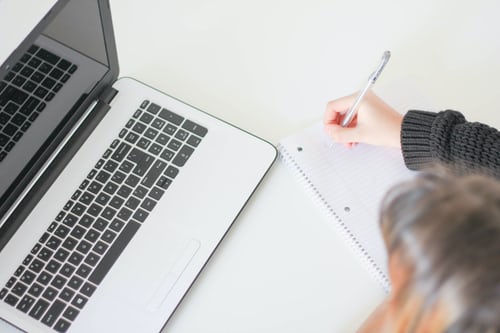What Is Flipped Classroom Model_
“Flipped Learning is robust instruction made possible by leveraging technology to create fertile spaces for teaching and learning.” – Marshall.
As the name suggests, the flipped classroom model is a combined mode of learning and is just the inverted mode of conventional education. Do you know that the USSR was the first nation to implement the strategy of the flipped classroom? In this teaching model, teachers make the students complete the assignments and homework in the live classes conducted through the online education app. Before that, teachers usually ask them to go through the handouts and study materials they provided to the students.
Usually, students watch the online lectures and explanation videos as part of their home tasks. In this era of online education, the widely available teacher apps are used to discuss the core topics and concepts to encourage teacher-student interaction during class time. In the flipped classroom model, live activities are diverse and include problem finding, digital research, online collaborative discussions that promote teamwork, and text readings.
A Brief History Of Flipped Classroom Model
The idea of flipped classroom model is not new but has evolved to the present stage after the passage of an extended period. In 1984, Militsa Nechkina, a core member of the USSR Academy of Paedological Sciences, first came up with this innovative idea. Later, in 2007, Jonathan Bergman and Aaron Sams, two educators hailing from Colorado, realized the students’ boredom in engaging with the rote learning system. So, they recorded the lectures in the form of videos and sent those to the students. They called this way of teaching “pre-broadcasting.”
Moreover, Maureen Lage, Micheal Treglia, and Glenn Platt published their paper “Inverting the Classroom” in 2000. Soon, it got popularised into a major classroom model and more so due to the widespread prevalence of online classes. This classroom structure makes the use of technology and collaborative learning, promoting teamwork.
Pros & Cons Of Flipped Classroom
Pros
- Flipped classroom provides the students with a golden opportunity to learn at their own pace.
- The recorded lectures and teaching sessions help the students go back to those videos before the exams for revision or clearing their concepts in case of any doubts.
- This mode of the inverted classroom helps the teachers make their points without any intervention while recording the lectures in a single go.
- Teachers can also use the same video content with students of the next batch if the syllabus stays the same, with just a bit of modification in the video.
- Educators can also share the video lectures with their colleagues and collaborate to create a new video file for the students.
- Since the video lectures stay with the teachers’ devices, they can edit those videos, add necessary comments, and improve certain parts of it to help better understand the students.
- Students get a greater deal of flexibility and can manage their schedules according to their commitments. After all, they need to watch the video lessons minutely and complete the tests and assignments in the class the next day.
Cons
- Students may get distracted and avoid watching the video lectures at home.
- Often, the students lose interest in the subject due to a lack of clarity and often have poor performance.
What Is Meant By ‘F.L.I.P.?’
F: The ‘F’ in the word ‘Flipped’ stands for flexibility in the learning culture. The student-friendly approach lets the students learn at their convenience, and they get a great deal of autonomy in learning new things.
L: ‘L’ stands for learning culture as a healthy learning atmosphere is created among the students and teachers as they can get their doubts clarified the next day.
I: The letter ‘I’ in ‘FLIP’ implies intentional content that is enriched with explanations, diagrams, and relevant media files to help the students get a proper grasp of the topic.
P: ‘P’ stands for ‘Professional Educator’ as the teachers need to have proper expertise in their working realm to guide the students properly.
Conclusion
Flipped classroom model is an innovative idea to maximize the educational benefits of the students. Students can now watch the lectures easily at home and attend the online classes to assess how well they have understood or read a particular lesson. In this way, their performances are also improved greatly, thus paving the way for their bright careers ahead.

